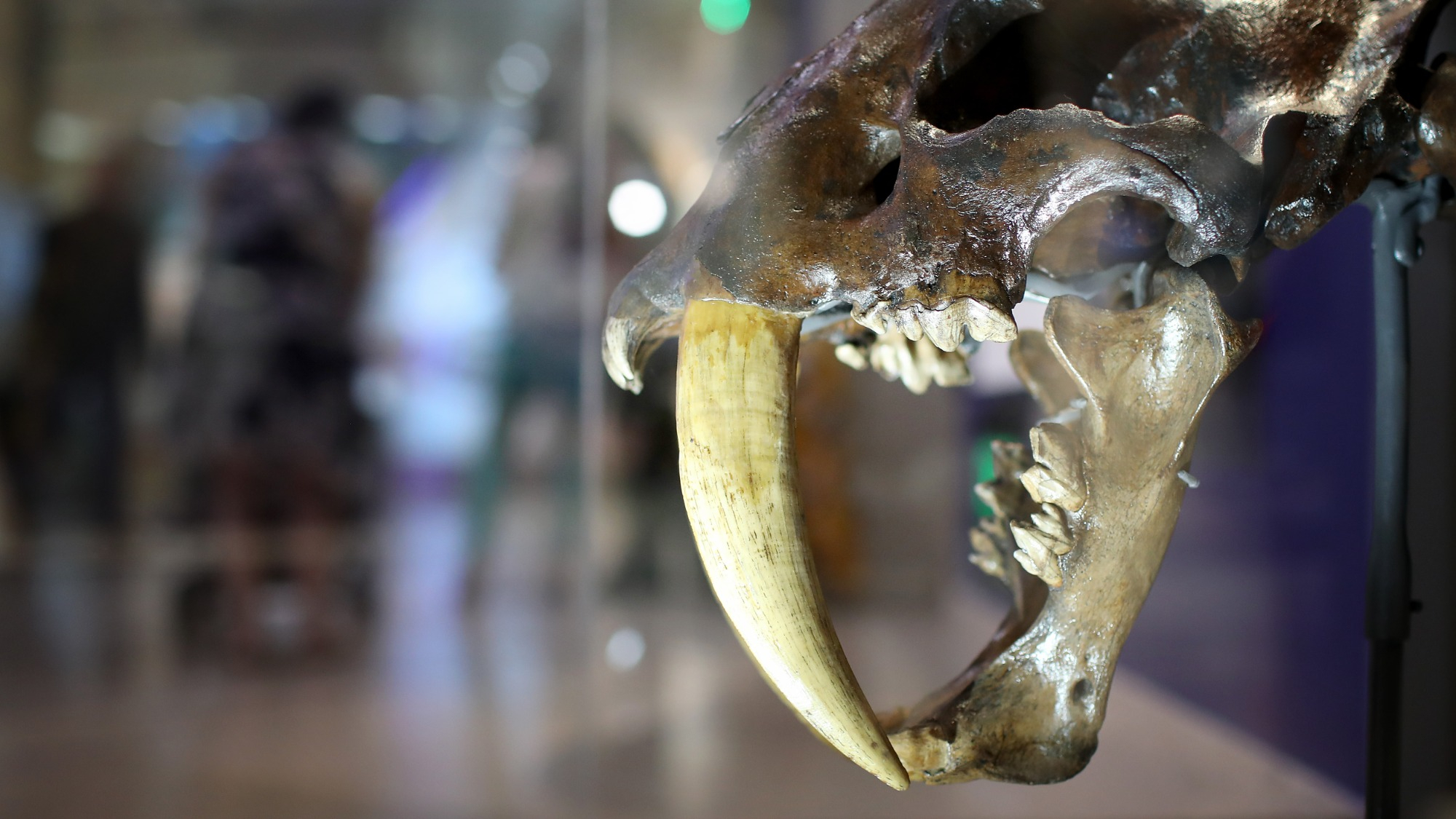

The terrifying and fascinating saber toothed cats that once roamed the earth from California to China may have two new species to add to their family tree. After taking a deep-dive into a large collection of fossils from six to seven million years ago, scientists found two new species of these ancient sabertooth cats. The findings, published July 20 in the journal iScience, present the first family tree of the ancient sabertooths that roamed present day South Africa. The new feline lineage suggests that the distribution of the animals may have been more diverse than scientists thought.
[Related: With bulging eyes and a killer smile, this sabertooth was an absolute nightmare.]
The team examined a collection of Pliocene Epoch fossils in Langebaanweg, north of the city of Cape Town in South Africa. This location holds some crucial information about the continent’s paleoenvironment, like how it transitioned as temperatures warmed.
“The known material of sabertooths from Langebaanweg was relatively poor, and the importance of these sabertoothed cats has not been properly recognized,” study co-author and Complutense University paleontologist Alberto Valenciano said in a statement. “Our phylogenetic analysis is the first one to take Langebaanweg species into consideration.”
This new study discusses four species in total—Dinofelis werdelini and Lokotunjailurus chimsamyae represent the two that were previously unknown. Fossilized remains of the Dinofelis sabertooth cats have been found on multiple continents including Asia, Europe, and North America. The team was expecting to find a new Dinofelis species from South Africa based on some prior research, but the other new species in the Lokotunjailurus genus has only been previously identified in Kenya and Chad. Finding a Lokotunjailurus species in South Africa suggests that these cats may have been distributed throughout the African continent between five and seven million years ago.
A team of colleagues from China, South Africa, and Spain classified the physical traits belonging to each sabertooth species, including jaw and skull shape, tooth structure, and the presence or absence of teeth. They then coded this information into a matrix that could help determine how closely each sabertooth species was related to their evolutionary cousins.
The resulting family tree of the sabertooths from Langebaanweg reflects the increasing global temperatures and environmental changes that the continent saw during the Pliocene. For instance, the presence of cats in the larger and faster subfamily Machairodontini suggests that Langebaanweg once had open grassland environments, but the presence of the Metailurini cats suggests that the region also had more covered environments like forests.
[Related: Life in Los Angeles was brutal for saber-toothed cats.]
The presence of both the tree-loving Metailurini and speedy Machairodonti species suggests that Langebaanweg did have a mixture of forest and grasslands about 5.2 million years ago. Still, the high proportion of Machairodonti species compared with other fossil hotspots in Europe, Asia, and other parts of Africa confirm that the southern parts of Africa was likely undergoing an ecological transition towards more open grasslands during this period.

The team notes that the composition of sabertooths in Langebaanweg is similar to that of those found in Yuanmou, China. These Chinese Longchuansmilus sabertooths may have a close evolutionary relationship with South Africa’s Lokotunjailurus species.
“This suggests that the ancient environment of the two regions was similar or that there was a potential migration route between the Langebaanweg and Yuanmou,” co-author and Peking University paleontologist Qigao Jiangzuo said in a statement.
More fossil evidence could help the team understand exactly how these two fossil sites that are separated by almost 7,000 miles are related.
